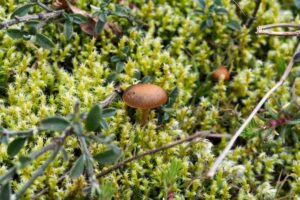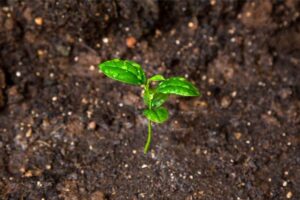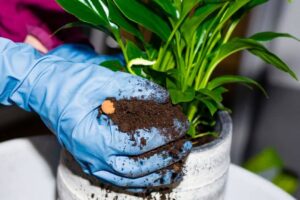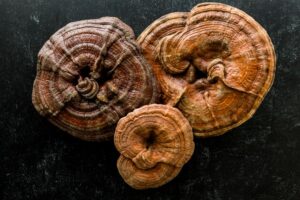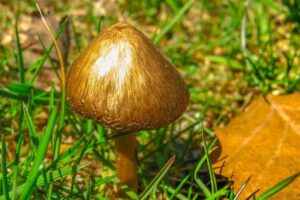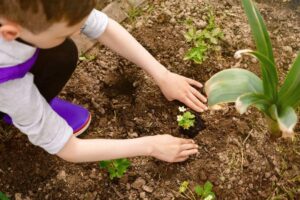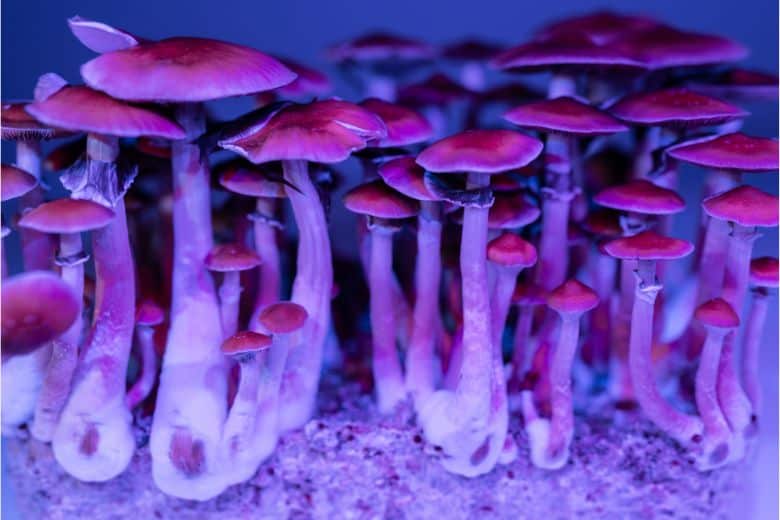
Growing your own Golden Teacher mushrooms can be an exciting and rewarding experience. Known for their vibrant gold caps, these mushrooms are not just renowned for their aesthetic appeal but also their potent psychedelic properties. But the question remains: how can you cultivate these golden wonders at home?
This comprehensive guide will help you unravel the mysteries of mushroom cultivation. It highlights key steps, necessary tools, and handy tips to ensure a successful yield. So, let’s embark on this magical journey together!
Understanding Golden Teacher Mushrooms
Golden Teacher mushrooms, scientifically known as Psilocybe cubensis, are a favorite amongst cultivators for their relative ease of growth and bountiful yields. They get their name from their distinct golden caps and the supposed spiritual and psychological insights they offer.
Here is some basic information about Golden Teacher mushrooms:
- Golden Teacher is a variety of Psilocybe cubensis, one of the most common psychoactive mushroom species. It contains the compounds psilocybin and psilocin, which can produce psychedelic effects when consumed.
- The caps are light brown/gold in color, while the stems are light tan. Mature mushrooms often reach 6-8 cm in height and have a mild mushroom/earthy odor.
- When consumed, they typically induce visual and mental effects within 30-60 minutes. Common experiences include enhanced colors, patterns, imagination, and senses. Emotions may intensify and produce empathy, introspection, and spiritual appreciation.
- The set and setting greatly influence the trip. It should be taken in a safe, comfortable environment with trusted companions for support. Negative experiences can potentially occur if taken irresponsibly or without proper preparation.
- Short-term effects last 3-6 hours, but alterations in perception may continue for 8 hours or more. Microdosing smaller amounts of Golden Teachers has become popular for its subtle yet beneficial effects without strong psychedelia.
- While it can be a meaningful experience for some, the cultivation and use of psychedelic mushrooms remains illegal in most places. Proper research should be conducted before deciding to grow or consume them.
Origin and Characteristics
Golden Teachers originate from Florida and have grown in popularity due to their pronounced psychedelic effects. They are distinguished by their large golden caps and long, winding stems. Typically, the effects of Golden Teacher mushrooms include visual distortion, enhanced colors, lightness or giddiness, and powerful introspective thoughts.
Here are some key details about the origin and characteristics of Golden Teacher psilocybin mushrooms:
Origin:
- Golden Teacher spores were first isolated and cultivated in the 1960s. However, the exact wild origin is unknown.
- They likely originated from spores found growing on animal/livestock dung in subtropical or tropical climates suitable for Psilocybe cubensis.
- It’s believed they were given the name “Golden Teacher” because the spores produced a consistent mushroom with moderate potency, which is good for educational purposes.
Physical Characteristics:
- Cap: 1-3 inches wide, conical to convex in shape, light golden/tan color.
- Gills: Attach to the stem, close spacing, start out white and turn dark purple/brown as mushrooms mature.
- Stem: 1-2 inches long, slender, white color, sometimes with a bulbous base.
- Spores: Dark purple/brown in color, elliptic shape.
- Tend to be medium in size, averaging 6-8cm tall when fully grown.
- Have an undefined, mild mushrooms/earthy odor.
Chemical Makeup:
- Contain the psychedelic compounds psilocybin and psilocin.
- Psilocybin converts to psilocin within the body, which binds to brain receptors to produce hallucinogenic effects.
- Generally considered to have moderate potency compared to other Psilocybe cubensis varieties.
So in summary, Golden Teachers are an identifiable psylocybin mushroom variety with consistent appearance and moderate psychoactive effects, making them well-suited for cultivation and educational use.
Why Grow Golden Teacher Mushrooms at Home?
Growing your own Golden Teacher mushrooms offers several benefits. Not only do you get to control the growing conditions to ensure a healthy yield, but it can also be a deeply rewarding and educational experience. Plus, it’s cost-effective and eco-friendly!
Preparing for the Cultivation Journey
Before diving into the growing process, there are several crucial factors to consider and materials you’ll need.
1. Necessary Equipment for Mushroom Cultivation
Certain equipment is vital to growing Golden Teacher mushrooms. This includes a growing medium (substrate), spores, sterilization tools, and the right environmental conditions.
2. Understanding Mushroom Spores and Where to Get Them
Mushroom spores are akin to seeds in plants. Obtaining high-quality Golden Teacher spores is the first step in your mushroom cultivation journey.
3. Choosing the Right Substrate
The substrate is akin to soil for plants, and choosing the right one for your Golden Teacher mushrooms is crucial for successful growth.
How to Grow Golden Teacher Mushrooms: Step by Step
Growing Golden Teacher mushrooms, a strain of Psilocybe cubensis, can be an intriguing and rewarding hobby. However, cultivation and possession of Psilocybe cubensis are illegal in many jurisdictions. Please check local laws and regulations before proceeding.
Here are the basic steps you would follow to grow Golden Teacher mushrooms if it is legal to do so in your area:
Step 1: Acquiring the Spores
Spores can be legally purchased online as spore syringes or prints, depending on your location. Always buy from a reputable source to ensure quality.
Step 2: Preparation of Substrate
The substrate is the material on which the mushrooms will grow. A simple and effective substrate can be made from vermiculite, brown rice flour, and water. Mix 2 parts vermiculite, 1 part brown rice flour, and 1 part water. The mixture should be moist but not wet.
Step 3: Sterilization
Before inoculating with spores, it is critical to sterilize the substrate to kill any potential contaminants. Fill 250ml jars 3/4 full with the substrate mixture, leaving some airspace at the top. Secure the lids and cover the top of the jars with a layer of aluminum foil to prevent water from entering during sterilization. Sterilize the jars in a pressure cooker for about 90 minutes at 15 psi.
To eliminate contamination risks, you can also sterilize the substrate in a pressure cooker at 15 psi for 2 hours.
Step 4: Inoculation
Once the jars have cooled, inject the spore solution from the syringe into them through the lid holes, taking care to maintain sterility. Usually, about 1 ml of solution is enough for each jar.
Step 5: Incubation
Store the jars in a warm, dark place (around 75-80 degrees Fahrenheit or 24-27 degrees Celsius). In a few days to a week, you should see white mycelium begin to grow from the sites of inoculation. This is a network of fungal cells that will eventually produce mushrooms.
Step 6: Fruiting
After the jars are fully colonized by mycelium (usually 4-5 weeks), they can be birthed for fruiting. Remove the cakes from the jars and soak them in cold water for 24 hours. After this, place them on a layer of damp perlite in a fruiting chamber, which can be a large plastic container with holes for air exchange. Maintain high humidity (90-100%) and a temperature around 70-75 degrees Fahrenheit (21-24 degrees Celsius). Provide indirect light for 12 hours a day.
Step 6: Harvesting
Mushrooms can be harvested once the veil underneath the cap has broken, revealing the gills. Gently twist and pull the mushroom from the substrate.
Step 7: Drying
If not consumed immediately, mushrooms should be dried to preserve them. They can be air-dried for 24 hours and then placed in a dehydrator until completely dry.
Remember, cleanliness and patience are key in the mushroom-growing process. This is a simplified guide, and it may take a few tries to get it right, as mushroom cultivation can be a delicate and nuanced process.
Potential Challenges in Growing Golden Teacher Mushrooms
Growing Golden Teacher mushrooms, like cultivating any mushroom species, comes with a set of potential challenges. Here are some common issues you may encounter:
- Contamination: The biggest challenge for most mushroom cultivators is keeping the growth environment sterile. Contaminants like bacteria and mold can outcompete the mycelium for resources, leading to failed growth or harmful byproducts. It’s critical to sterilize your equipment and substrate and maintain clean procedures throughout the entire process.
- Suboptimal Growing Conditions: It can be tricky to achieve the correct balance of humidity, temperature, light, and fresh air. Suboptimal conditions can lead to slow or stunted growth or even prevent the mushrooms from fruiting altogether.
- Poor Quality Spores: If your spores are old, stored improperly, or contaminated, they may not germinate, which means no mycelium and, ultimately, no mushrooms. Always source your spores from a reputable supplier.
- Incorrect Substrate Preparation: The substrate needs to be prepared correctly in terms of its components, moisture content, and sterilization. If it’s too dry, the spores may not germinate; if it’s too wet, it can lead to contamination.
- Inadequate Fruiting Conditions: Even if the colonization phase goes well, fruiting can be a challenge. Without the correct light, temperature, and humidity, your fully colonized substrate may not produce mushrooms.
- Drying and Storage: After harvesting, mushrooms must be dried properly to prevent decay. If the mushrooms are not dried thoroughly, they can rot during storage.
- Legal Issues: As mentioned before, Psilocybe cubensis (which includes the Golden Teacher strain) is a psychedelic mushroom, and its cultivation is illegal in many jurisdictions. Always check and follow your local laws and regulations.
These potential challenges underline the importance of careful preparation, attention to detail, and patience in the process of mushroom cultivation. Understanding the mushroom life cycle and growth requirements is also crucial.
Safety Precautions When Consuming Golden Teacher Mushrooms
Golden Teacher mushrooms, a strain of Psilocybe cubensis, contain the psychedelic compounds psilocybin and psilocin. They can have profound psychological effects and should be used with caution. Here are several safety precautions to keep in mind:
- Check Local Laws: The use of psilocybin mushrooms is illegal in many jurisdictions. Always be aware of and respect local laws.
- Understand the Effects: Psychedelic mushrooms can cause changes in perception, mood, and thought and can elicit hallucinations. The effects can be intense and overwhelming, especially for first-time users.
- Dosage Control: Start with a small dose if you’re new to psychedelic mushrooms or have never tried the Golden Teacher strain. The potency of mushrooms can vary, and it’s better to err on the side of caution.
- Set and Setting: Make sure you’re in a comfortable, safe environment before consuming psychedelic mushrooms. “Set” refers to your mindset going into the experience, and “setting” refers to your physical environment. Both should be positive and peaceful.
- Have a Sober Sitter: It’s a good idea to have a sober, trusted person present to ensure your safety and provide support if you have a difficult experience.
- Don’t Mix with Other Substances: Mixing psychedelic mushrooms with other substances, especially alcohol or other drugs, can lead to unpredictable effects and increase the risk of a negative reaction.
- Health Considerations: If you have a history of mental health conditions, especially schizophrenia or bipolar disorder, or if these conditions run in your family, psychedelic mushrooms may not be safe for you. They can trigger or exacerbate these conditions in some people. Likewise, if you have any serious physical health conditions or are pregnant, consult with a healthcare professional before considering the use of any psychedelic substance.
- Know Your Mushrooms: If you’ve grown your own mushrooms, you’ll know exactly what you have. However, if you’ve obtained them elsewhere, be absolutely sure they are what they’re claimed to be. Misidentified mushrooms can result in consumption of toxic species.
Frequently Asked Questions
How long does it take to grow Golden Teacher mushrooms?
Answer: It typically takes around four to five weeks from inoculation to harvest.
What is the ideal temperature for growing Golden Teacher mushrooms?
Answer: The ideal temperature for colonization is 75-80°F, while for fruiting, it is 70-75°F.
Can I grow Golden Teacher mushrooms outdoors?
Answer: While it is possible to grow Golden Teacher mushrooms outdoors, indoor cultivation allows for better control over environmental conditions, leading to better yields.
How can I increase the yield of my Golden Teacher mushrooms?
Answer: Ensuring the right environmental conditions, using high-quality spores and substrate, and implementing techniques like Dunk and Roll can help increase your yield.
What are the signs of contamination in my mushroom culture?
Answer: Signs of contamination include unusual colors like green, black, or yellow on the substrate, a foul smell, or slow or halted mycelium growth.
How should I store my harvested Golden Teacher mushrooms?
Answer: The best way to store harvested Golden Teacher mushrooms is to dry them thoroughly and then store them in an airtight container in a cool, dark place.
Conclusion
Embarking on a journey to grow Golden Teacher mushrooms is an exciting endeavor. With the right equipment, knowledge, and patience, you can transform your home into a productive mushroom farm. Whether you’re a beginner or an experienced cultivator looking to expand your horizons, this comprehensive guide is a reliable roadmap to a bountiful yield of Golden Teacher mushrooms. Happy mushrooming!

